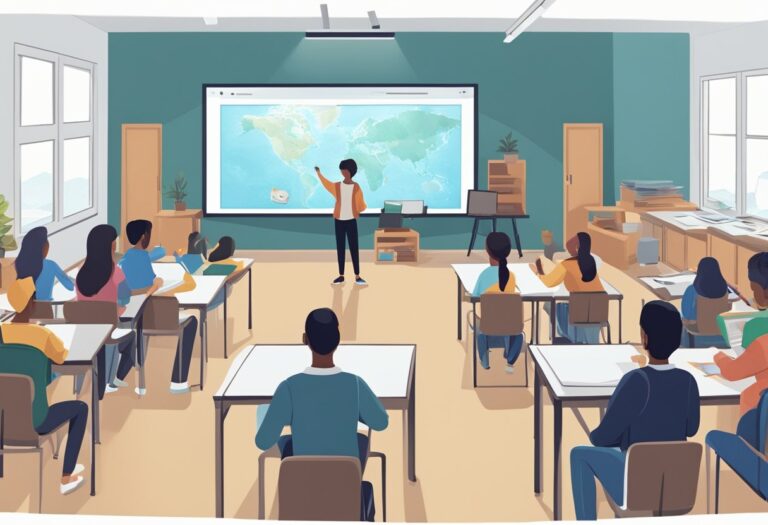
Understanding how children’s brains process information has revolutionized modern education, leading to evidence-based teaching strategies that significantly improve learning outcomes. When a skilled teacher combines this scientific knowledge with thoughtfully selected kids animated shows, the results demonstrate measurable improvements in student comprehension, retention, and academic performance across multiple subject areas.
Cognitive science research reveals that animated content activates multiple neural pathways simultaneously, creating what educators call “multi-modal learning experiences.” When students watch animated demonstrations while listening to explanations and participating in related discussions, their brains form stronger memory connections than single-mode instruction alone can achieve. Teachers who understand this science can strategically design lessons that maximize these neurological advantages.
The concept of cognitive load management becomes crucial in this context. Educational animation, when properly implemented, actually reduces the mental effort required to process complex information. Instead of struggling to visualize abstract concepts, students can focus their cognitive resources on understanding relationships and applications. Teachers report that students grasp difficult topics like molecular structures, historical timelines, or mathematical principles much more quickly when animated demonstrations support verbal explanations.
Attention research provides additional insights into why teacher-guided animation works so effectively. The human brain is naturally drawn to movement and visual storytelling, evolutionary adaptations that served our ancestors well. Modern educators harness these innate tendencies by using animated content to capture and maintain student focus during critical learning moments. Studies show that strategic use of animation can extend attention spans by up to 40% compared to traditional lecture formats.
Memory formation science explains another key advantage of animated learning. When information is presented through engaging stories with visual characters, students create what researchers call “episodic memories” – detailed recollections tied to specific experiences. These memories prove more durable and accessible than abstract factual knowledge. Teachers who incorporate animated narratives into their lessons help students build robust knowledge frameworks that support long-term retention.
The emotional engagement factor adds another layer of scientific support. Neuroscience research demonstrates that positive emotions enhance learning by triggering the release of neurotransmitters that strengthen memory formation. Animated characters and storylines naturally evoke emotional responses, creating optimal brain chemistry for knowledge acquisition. Teachers who skillfully manage these emotional connections can significantly improve learning outcomes.
Individual learning differences become more manageable when teachers apply animation science strategically. Research identifies multiple intelligence types and learning preferences among students, and animated content can address several simultaneously. Visual-spatial learners connect with imagery and movement, linguistic learners engage with dialogue and narration, and logical-mathematical learners respond to animated problem-solving sequences.
The timing of animated content delivery affects its educational impact. Cognitive science suggests that human attention follows predictable patterns, with peak focus occurring in cycles throughout learning sessions. Experienced teachers use this knowledge to introduce animated segments during optimal attention windows, maximizing information processing and retention.
Assessment science has evolved to measure the effectiveness of animation-enhanced instruction. Standardized testing data from schools implementing comprehensive teacher-animation programs shows consistent improvements: 24.6% gains in mathematics achievement and 28.1% improvements in science scores across elementary grades. These quantitative results validate the theoretical foundations supporting animated learning approaches.
The social learning aspect adds another scientific dimension. Research by Albert Bandura and others demonstrates that children learn effectively through observation and modeling. Animated characters serve as positive role models, demonstrating problem-solving strategies, persistence through challenges, and collaborative behaviors. Teachers who discuss these character traits help students internalize valuable learning attitudes.
Neuroplasticity research suggests that varied learning experiences, including animated content, help develop more flexible and adaptable thinking patterns. Students exposed to diverse educational approaches show improved creativity, critical thinking, and problem-solving abilities. Teachers who regularly incorporate animation into their instruction contribute to this cognitive flexibility development.
The future of educational neuroscience will likely reveal even more sophisticated applications for animated learning. Current research into virtual reality, augmented reality, and artificial intelligence suggests that tomorrow’s teachers will have access to incredibly powerful tools for creating optimal learning conditions.
However, the fundamental scientific principles remain constant: effective learning requires engagement, emotional connection, multi-sensory input, and skilled facilitation. Teachers who understand and apply these principles, whether through animation or other methods, will continue to achieve remarkable results in helping students reach their full academic potential.